Why Effective Internal Communication Is Essential for Enterprises



 Cut onboarding time
by 60%—here's the
Ultimate Checklist
that helped do it.
Cut onboarding time
by 60%—here's the
Ultimate Checklist
that helped do it.

Anyone who has ever worked at a corporation knows that while the ability to work independently is necessary, working well with a team is crucial. Every enterprise is made up of multiple team members, each with a different specialization. If too many employees are thinking of themselves as a one-man show, the company is going to have a problem. This is where a robust internal communications strategy becomes essential.
It is said that a team is only as good as the sum of its parts. When there is a weak link in the chain, it can cause a bottleneck. This, in turn, impedes good work. Effective collaboration within groups and between departments is what ultimately continues to make all the cogs turn in the "machine" that is your business. A well-crafted internal comms plan can help prevent these issues.
Successful internal communications move things forward daily and are one of the biggest factors that affect your bottom line for the year. If you want a great workflow and to avoid unnecessary slowdowns, you and your employees need to strive for an environment where everyone works well collaboratively. This is where strategic internal communication plays a crucial role in fostering employee engagement and productivity.
Discover why enterprises need to understand, adapt, and create a communication strategy framework around internal communication. This guide explains how internal enterprise communication has evolved, why it's essential, how to create a cohesive internal communication strategy, and which platforms support this infrastructure.
How Internal Communication has Evolved and Why it’s Important 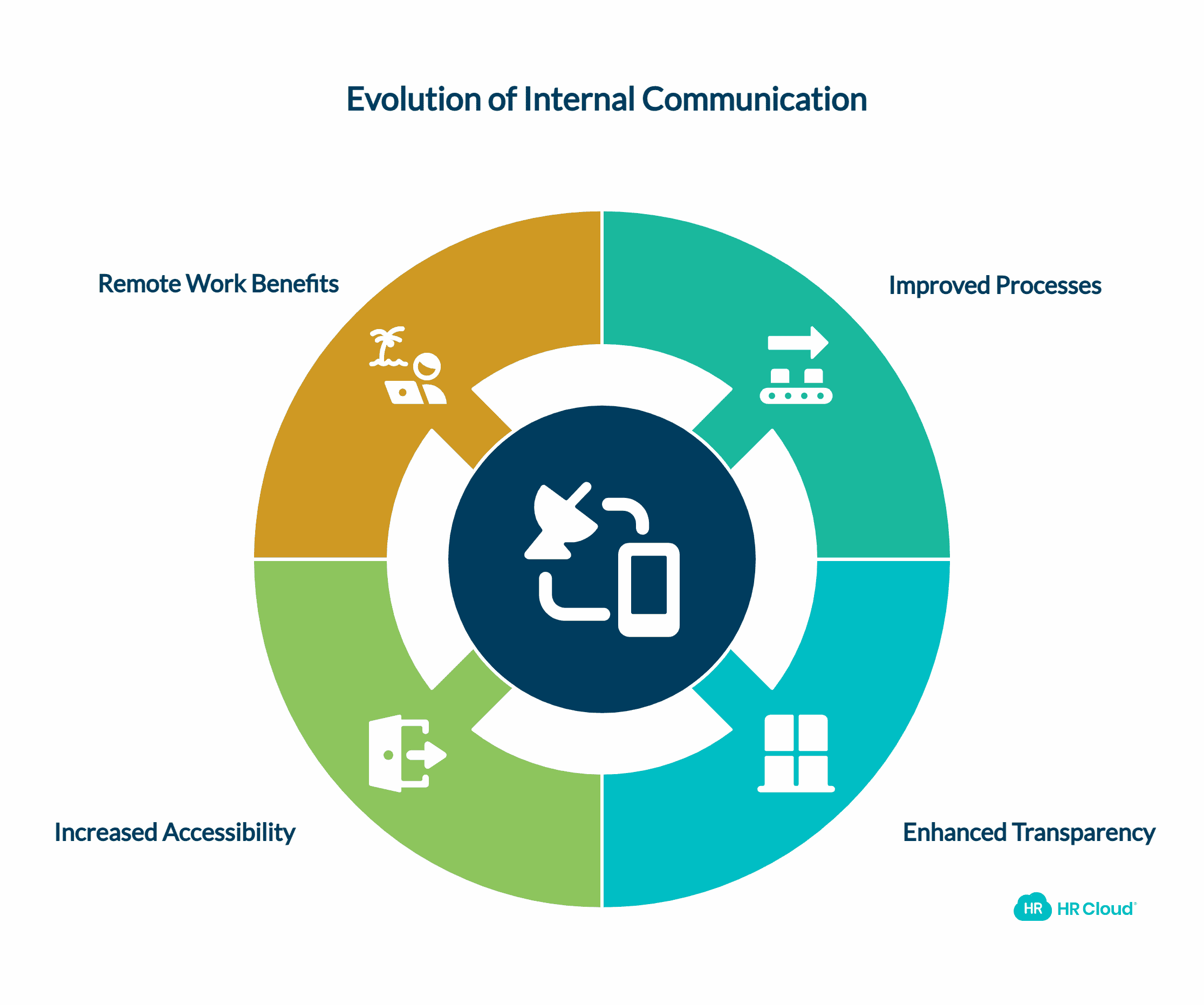
Advances in technology over recent years have made for convenient systems that help foster internal communications. While it's true that technology has made some things more complex, it doesn't mean they are more complicated. Instead, processes improve, people are more transparent, and work feels significantly smoother.
When we properly train team members on how to use the latest communication technology, their lives are more accessible than ever before. Once you implement strategic new processes and employees are utilizing efficient methods of connecting their teams, work will get done faster, and with fewer mistakes. This is where a solid internal comms plan can make a significant difference in improving internal communications.
Multi-Channel Engagement Approach
Today, there are many different communication channels you can use to engage employees and encourage them to engage with the company. If employees have a method that they find intuitive, helpful, and comfortable, they are more likely to take advantage of it in productive ways. No communication channel should feel forced or cumbersome.
The key is selecting platforms that employees can implement seamlessly into their schedule, communication channels that improve their workdays rather than pose hurdles. Use this as an opportunity to build the company culture. 80% of people surveyed said that culture and employee engagement should be a top priority for enterprises so they can adequately respond to employees' needs.
Open up the lines of communication between employees at your enterprise by providing them with platforms to share work and personal updates. These messages could include reward announcements, birthday wishes, and individual employee wins. Teams that develop good relationships, see their coworkers as friends, and support each other tend to work together best. This is a prime example of how communication and engagement go hand in hand, highlighting the importance of employee engagement communication.
And, if you think about it, the best ideas often come from team efforts. When lots of people are exchanging thoughts, open communication channels can ensure innovative notions don't slip through the cracks. People can build off of each other's opinions and feedback to form the next great thing. This is where engagement communication can truly shine.
Modern-day technology has also made it easier to reach a broader range of workers all at once, including:
-
Desk employees
-
Executives and administrative employees
-
Frontline workers who might not be able to check emails as fast, so they need another way of staying up to speed with others
The platforms available today can link all employees at any level. Tear down the company-wide barriers and motivate everyone to feel as though they are united. They each make up part of one big group with the same mission, values, and goals. This organizational alignment is crucial for success and can be achieved through effective internal communication strategies.
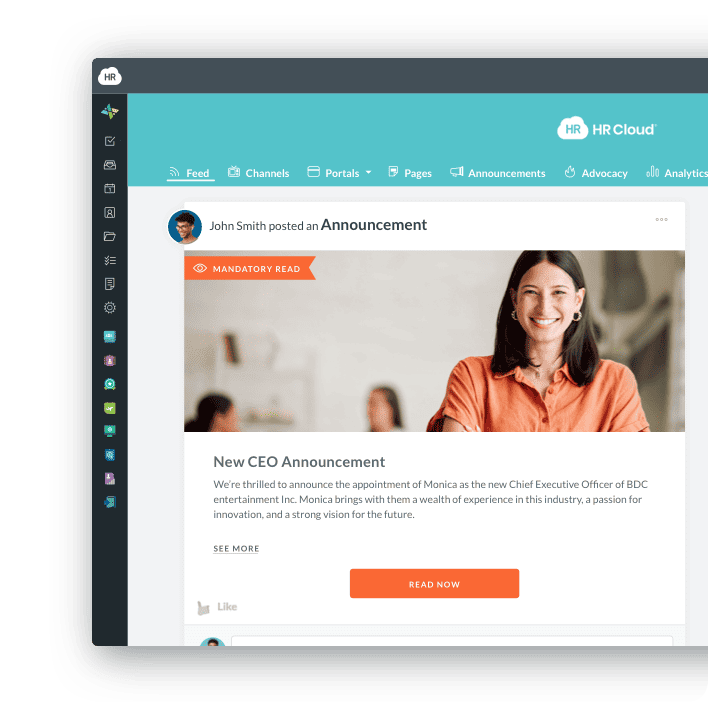
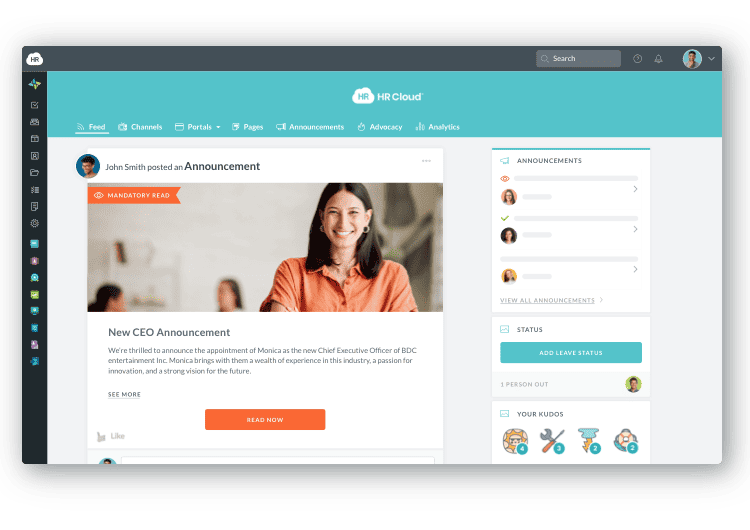
Going Remote: Dispersed Workforces
When you source candidates from across the globe, you increase your chances of getting the best talent. Their closeness to your office or headquarters is no longer a preliminary factor. A study found that workers who spend at least 60% of their time away from the actual office had the highest engagement rates. When you have an exemplary internal communication system, it connects employees, even when miles apart.
These remote employees report feeling more motivated, productive, and happier overall. Allowing employees to work remotely wasn't previously possible. Enterprises are now embracing the choice to offer telecommuting after learning about the positive benefits to their bottom line, employee satisfaction, and retention.
You'll thank yourself for adding a remote work perk to your policies when workers are raving about the amazing work-life balance your company offers, rather than the burnout employees at other businesses complain of. The right programs will enable you to instill this feeling by making remote work a real option for your team. We've heard some of the benefits, now let's take a closer look at how to build an internal communications program at your corporation.
What to Consider When Building a Cohesive Communications Strategy 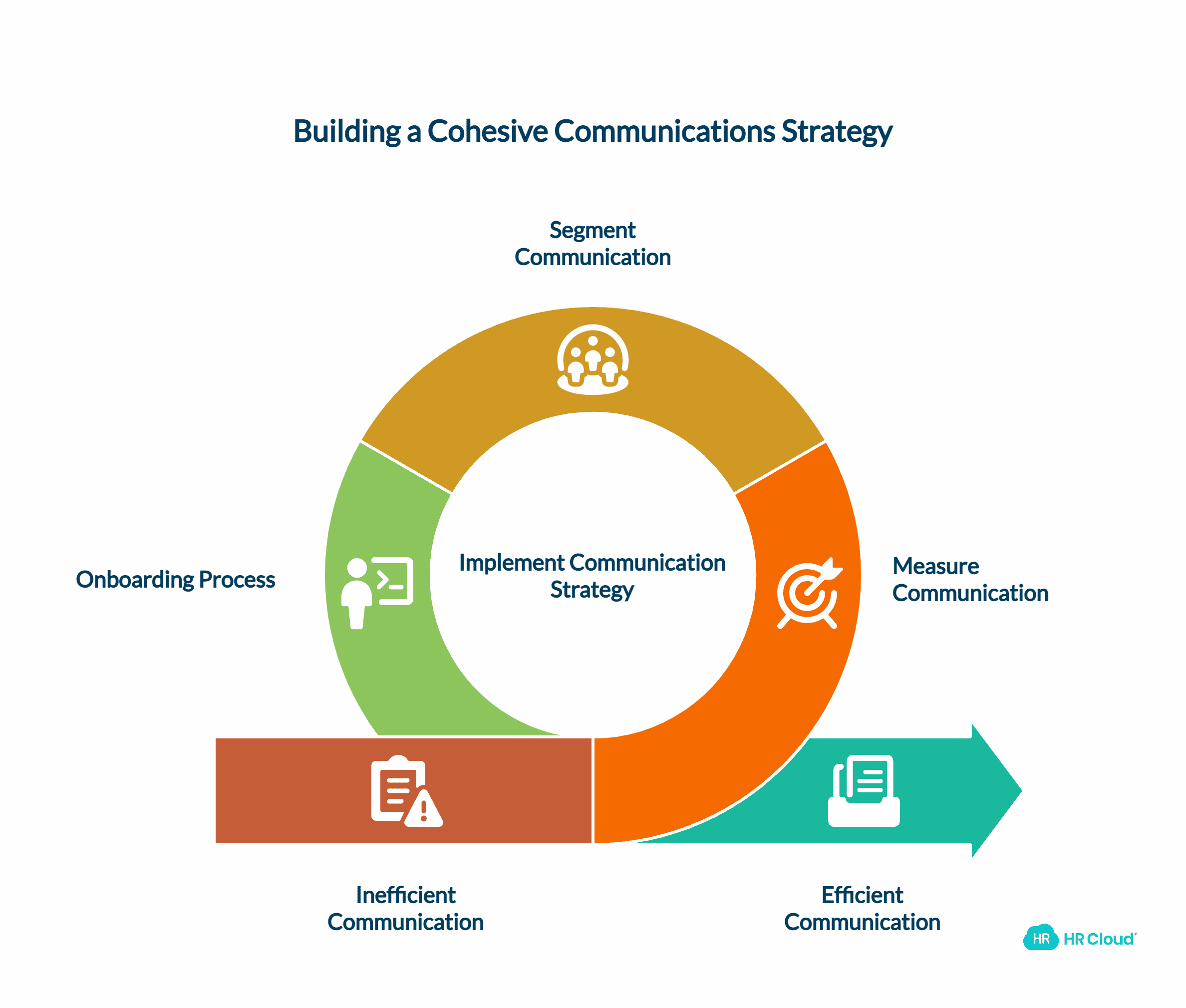
Know where to start. Make each decision a calculated and deliberate one. There is a lot to learn, and this is just the tip of the iceberg in terms of what you can do to get employees efficiently communicating. Here are some actionable items to get you on your way if you have yet to sit down and make a plan. This is where your internal communication strategy comes in.
Measure Communication: Internal Communication Goals
With any new process you adopt into your workforce or new tool you introduce to your staff, the key is setting measurements for success. Adoption, retention, and engagement rates are essential to understanding how effective your communication strategy is.
As you may have guessed, this works best when each employee is open to the change and doing their part. More and more companies are prioritizing the employee experience. To understand whether employees are genuinely receiving value from new communication software, HR managers rely on analytics. Reviewing weekly or monthly insight reports on whether employees are utilizing their internal communication tools is crucial.
A universal base goal would be to have all departmental staff informed of significant updates. How will a manager know if the staff is receiving and reading important notices? With data. Some tools allow managers to review engagement data and connect with employees who are leaving important messages unopened, or who are not utilizing the programs as much as their colleagues.
Set clear, measurable goals so you know you're always moving forward in your efforts to upgrade employee experience. Without proper aim, you're sure to run off track and land at square one (before you began to implement the programs). Also, think about your brand. It's vital that your workers all believe in what they, and the company at large, are doing.
Internal communications will align everyone on your business's identity. The emotional investment of employees will ultimately play a role in how they interact with clients and customers when marketing your brand. With the right plan, values, and internal communication in place, they will become brand advocates naturally, boosting employee advocacy efforts.
Segmenting Internal Communication: Employees and Channels
Although we do want everyone to feel like one cohesive entity moving toward the same goal, there are ways to break things down into subsections. If done correctly, this should not break the feeling of company-wide unity. Simply visualize the breakdown as smaller teams within larger teams. It will not always be appropriate for each person to get the same message.
To avoid information overload, prevent message pile-up, and encourage everyone to use the chosen platform effectively, implement team segmentation. For example, if a piece of code has gone awry, you'll want to send a request to your developers or IT department, not your accountant. If someone needs help with logos, they're probably not going to the copywriters for advice. And a note for the CEO from mid-line managers doesn't need to be seen by the frontline employees.
With modern internal communication software, there are features where one can alert specific people or departments so that only relevant individuals or groups receive notifications. And within those, message threads are created where each response pops up for whoever is included in a given channel. No need to bother extra people with tasks they are not a part of or cannot assist with. Conversely, if there's a general announcement, you can easily send it to everyone without crafting a mass email, as was once the most popular method.
Consider when, how, and where employees will access various pieces of critical internal communication for your company. There should be a process for this, and it should be taught to new employees when onboarding, so as not to waste time avoiding proper procedures. When all communication is appropriately filed and categorized, work is streamlined and organized. Efficient communications negate impediments and prevent prolonging the completion of a simple task.
Software That Supports Effective Internal Communications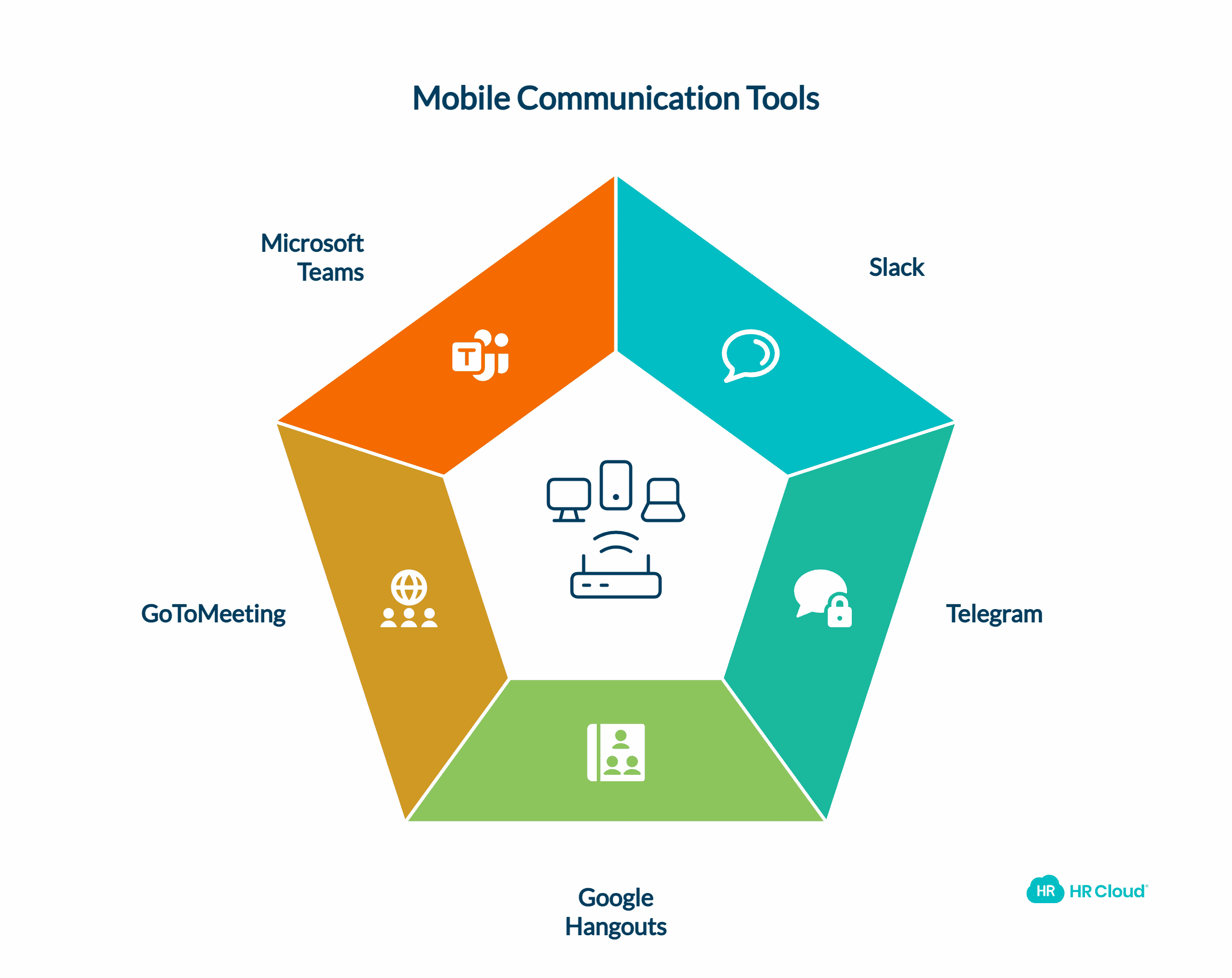
We've gone over the fact that technology is continuously improving the efficiency of large organizations. Now, let's visit some of the options available. Internal communication platforms for employees are plentiful and available in various platforms, such as apps, websites, company Intranet, and even mobile. The following will cover mobile, other online apps, and the Intranet.
Mobile Applications
Slack:
Slack is a virtual chat room with more robust features than its predecessors. One of the best features it offers is segmenting your employees into different categories, or "channels," so they're getting the most relevant information. Other features include direct messages, voice calls, video calls, file share, screen share, and beyond.
Telegram:
Telegram is similar in that it makes it easy to chat with coworkers, no matter where they are located. It's powerful enough for its convenient instant messages to be sent to groups as large as 200,000 members. They also boast being exceptionally safe, as you can encrypt messages and have threads containing company secrets self-destruct after a set amount of time.
Google Hangouts:
If you use Gmail to host your company email accounts, this one could save you some time—you can begin a conference straight from a message. A simple click will open up a video or other call to keep the lines of communication open, just as if everyone were in the room with each other. Remote workers can also access the app on virtually any mobile device, including their phone or tablet, if they cannot get to their computer in time for a meeting due to travel or family matters.
GoToMeeting:
Affectionately known as GTM to many of its users, this internal communication application allows everyone to feel as though they are there with each other, in person, whether in different rooms of a building, wings, buildings, or even different countries.
You may have several offices spanning the globe, or your company might be one of the ones starting to enable your workers to go remote. In either case, you can choose to call in on a phone or from a computer, with just audio or with video, and make sure everyone is seeing and hearing the same things all at once. This eliminates the chance for any confusion about what needs to be done, who is working on what, progress reports, etc. Have them use GTM according to how they would normally conduct a traditional meeting, and they’ll never feel the distance.
Microsoft Teams:
This is handy if your team uses a lot of Microsoft products for their everyday work, as it can seamlessly incorporate their favorite Office 365 software. There are also different packages set up where you can pay per month based on which add-ons you’d like. This is so you can customize for what your business needs and eliminate the rest if you’re trying to cut costs.
Intranet
Workmates:
One example of an Intranet for employee engagement and internal communication is Workmates. With this program, you can really feel the network and your whole team behind you. It’s a net to catch anyone who may be feeling lost and bring them back to the idea that we are all in it together.
Workmates is choc-full of helpful features that allow for collaboration, polling, announcements, integrations with other software, and even giving awards and recognition, which studies show is the best thing you can do to ensure employees feel valued. It’s a private, virtual space that can only be seen and used by the people at your company. Here, employees can interact meaningfully with their coworkers and create a true culture that would make any corporation envious of your own.
Difference Between Types of Internal Communication Solutions
Stand-Alone :
Stand-alone software can be beneficial if you adequately research and, subsequently, purchase the right one. Many of the latest stand-alone software programs being sold have been developed to fully integrate with the systems and products you’re already using. This makes for a fairly easy transition, so your workers won’t feel as though they must stop what they’re doing for too long in order to learn the new tools.
Embedded:
Many apps come with the ability to be embedded within other apps. This is because the company you’re purchasing from hopes to give you an all-inclusive feel to help you see the value in their products.
They don’t want you to have to go to any other business to get the multitude of tools you want when trying to build out an entire, comprehensive system. This could include one program with instant messaging, file sharing, and other capabilities, as we saw in the previous section. The idea is ease and simplicity for employees to connect without feeling slowed down or inconvenienced.
Industry-Specific :
Depending on your industry, you will also want to look into what’s out there to help your business create a customized experience. Not every company benefits the same from every communication software, so it’s important to find the one that’s right for you. For instance, organizations in the healthcare field will need to find software that is compliant with required key regulations like HIPAA.
It’s often not one-size-fits-all when it comes to technology, even if ads for some programs claim their products are. See which providers offer trials and have your team test things out to gauge what really works best.
The Importance of a Connected Culture
A lack of effective internal communication between employees, departments, and hierarchies within a business will cost money, time, resources, client trust, and employee retention rates—all of which can affect your bottom line. When it comes to internal communication, there is an unmistakable domino effect. Just like the Intranet we recommended you implement for your employees, the concept with people is the same.
More gets done when people are happy, and there are many different ways to make your employees happy through collaboration. Internal communication is essential for many aspects of your enterprise. From actual workflow to culture and staying on-brand, there are very few areas it doesn’t touch.
If workers are not on the same page, mistakes, slowdowns, and discouragement can happen across the board. Look internally first, and successful client interactions will come more naturally.
People always want to feel connected, a part of something bigger than themselves, and that their contributions matter. Learn more about how to make your HR department more efficient when you adopt the tips in this FREE download. This valuable guide will help your HR Manager become more efficient by switching to cloud-based tools. Contact us with any further questions, and we’ll be happy to help improve your internal communications and boost employee engagement.
To further enhance your internal communication strategy, consider implementing regular employee surveys and feedback mechanisms. These tools can provide valuable insights into the effectiveness of your communication initiatives and help identify areas for improvement. Additionally, creating a comprehensive communication roadmap can help align your internal communication efforts with broader organizational goals and change management initiatives.
Remember, effective internal communication is not just about disseminating information; it's about fostering a culture of two-way communication, enhancing employee motivation, and ultimately driving employee productivity. By continuously refining your internal communication strategies and leveraging the right communication platforms, you can create a more engaged, aligned, and productive workforce.
Keep Reading
45 Boss Day Messages That Actually Mean Something (2026 Guide)
When is Boss Day 2026? Mark your calendar for October 16, 2026 — the annual opportunity
Birthday Wishes for Coworkers: 50+ Messages That Build Workplace Connection
A coworker's birthday isn't just another calendar date—it's a meaningful opportunity to
Embracing Diversity: Recognizing Different Cultures in the Workplace
Workplaces today reflect the incredible diversity of the world around us. People bring
Like What You Hear?
We'd love to chat with you more about how HR Cloud® can support your business's HR needs. Book Your Free Demo

Build a Culture of Recognition. Boost Engagement. Guaranteed.
Workmates empowers employees to stay informed, connected, and appreciated—whether they’re on the front line, in the office, or remote. Recognition drives 12x higher engagement.Trusted by industry leaders in every sector




Cut Onboarding Costs by 60%.
Take the confusion and follow-ups out of onboarding with automated workflows, digital forms, and structured portals—so new hires ramp faster 3X quicker.Trusted by industry leaders in every sector




